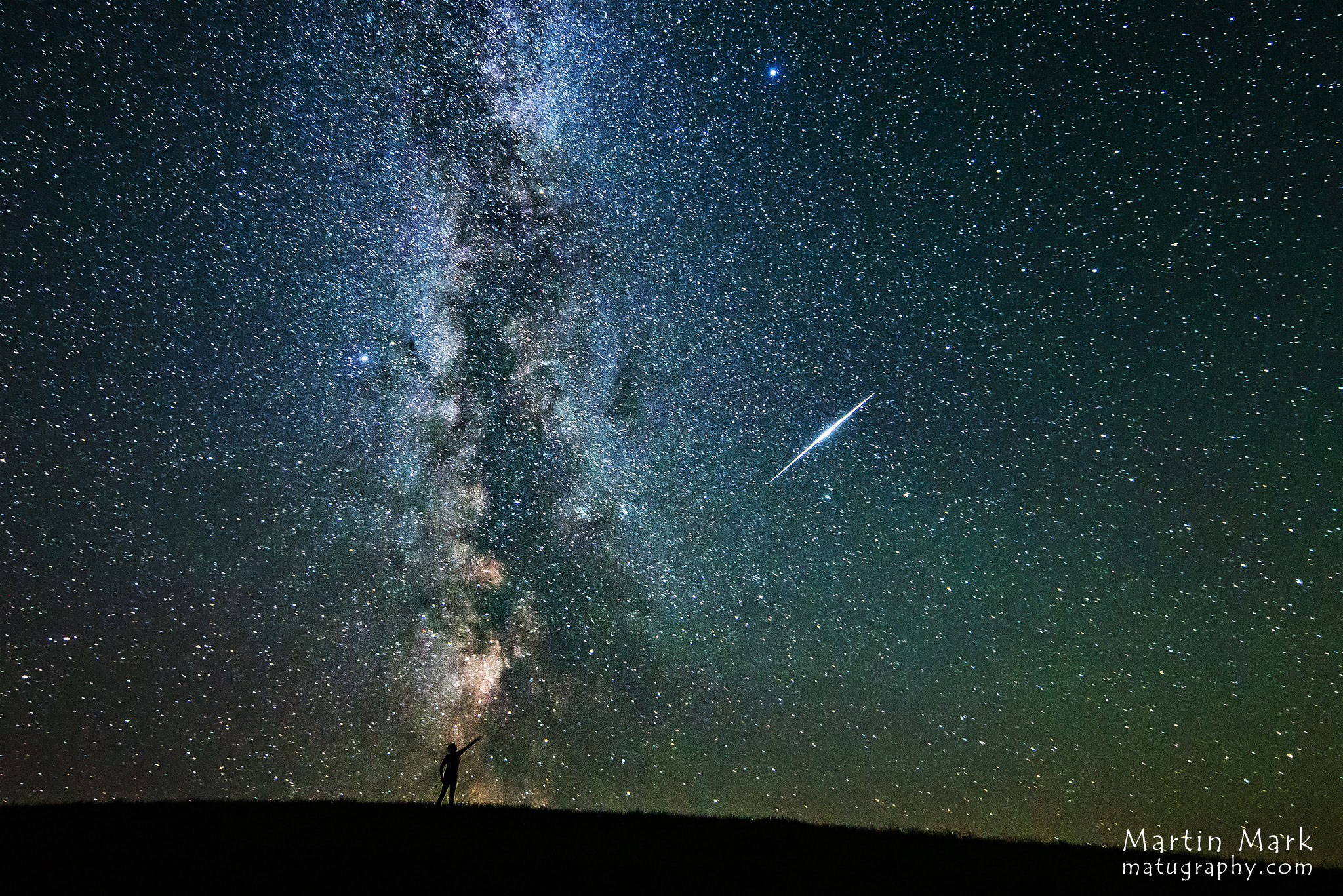
Copyright:
Martin Mark
原文:
Is this person throwing a lightning bolt? No. Despite appearances, this person is actually pointing in the direction of a bright Iridium flare, a momentary reflection of sunlight off of a communications satellite in orbit around the Earth. As the Iridium satellite orbits, reflective antennas became aligned between the observer and the Sun to create a flash brighter than any star in the night sky. Iridium flares typically last several seconds, longer than most meteors. Also unlike meteors, the flares are symmetric and predictable. The featured flare involved Iridium satellite 15 and occurred over southern Estonia last week. In this well-planned image, a spectacular night sky appears in the background, complete with the central band of our Milky Way Galaxy running vertically up the image center. Retrospective: Today in APOD History
中文翻譯:
這個人不是在扔一個閃電球。儘管看起來像,但實際上他是在指向一個明亮的伊利鋼閃光(Iridium flare),那是通訊衛星在地球軌道上反射陽光的瞬間現象。隨著伊利鋼衛星的運行,反射天線與觀察者和太陽的角度對齊,形成一個比夜空中任何星星都要明亮的閃光。伊利鋼閃光通常持續幾秒鐘,比大多數流星更加持久。同時,與流星不同,這些閃光的形狀是對稱和可預測的。這次展示的閃光涉及伊利鋼衛星15,並於上週出現在愛沙尼亞南部的上空。在這張精心策劃的圖片中,壯觀的夜空襯托著我們的銀河系中央帶,沿著圖片中央垂直延伸。
#IridiumFlare #Astronomy #NightSky #MilkyWay #Satellite #Estonia #Astrophotography #StarGazing #CosmicWonder #SpaceLovers
來源:NASA每日圖片


